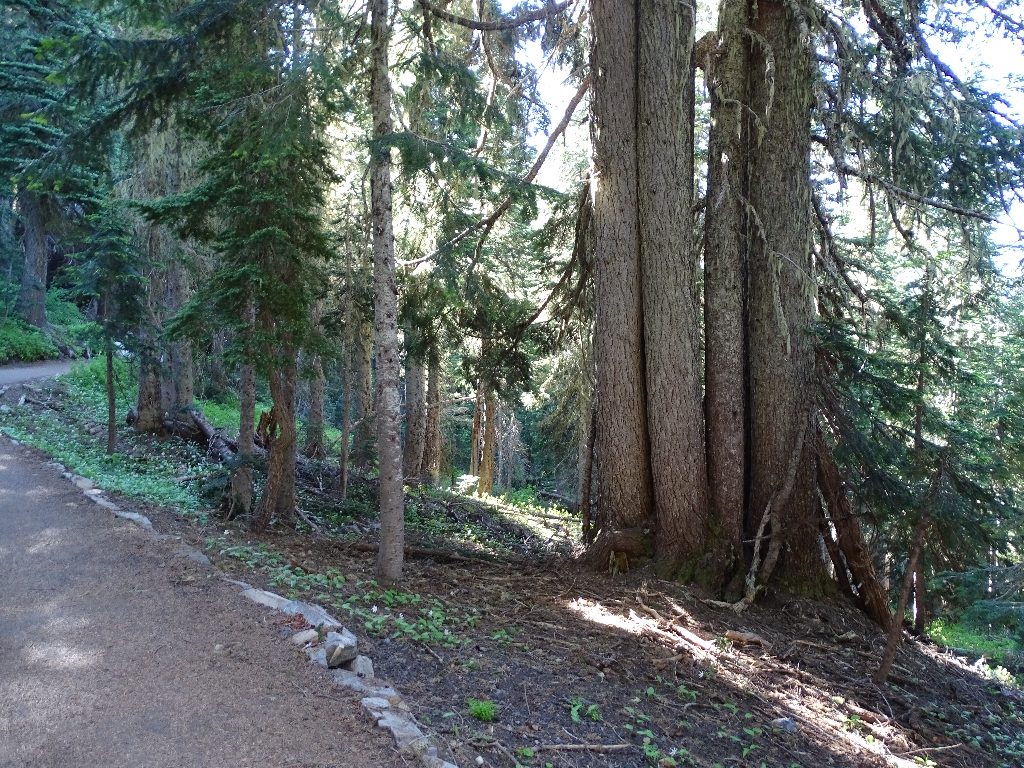
Trees in the subalpine must find ways to survive and grow with long periods of deep snow. One way to manage this is by growing in clusters. The original trees in each group become established in longer periods of warm growing seasons and provide shelter and warmth required for the survival of nearby seedlings. Extreme winters limit the growth potential of trees when they stand individually, which is why the biggest trees at this elevation are those growing in clusters. As you continue uphill on the switchback, you'll be surrounded by many trees with crooked trunks. Both the mountain hemlock and subalpine fir are quite flexible. Under heavy snow loads, small trees may bend to the ground. If a tree is held in this position for a long time, the trunk adjusts to the strain and becomes permanently bent.
Is there something we missed for this itinerary?
Itineraries across USA

Acadia

Arches National Park

Badlands

Big Bend

Biscayne

Black Canyon Of The Gunnison

Bryce Canyon

Canyonlands

Capitol Reef

Carlsbad Caverns

Channel Islands

Congaree

Crater Lake

Cuyahoga Valley

Death Valley

Dry Tortugas

Everglades

Gateway Arch

Glacier

Grand Canyon

Grand Teton

Great Basin

Great Smoky Mountains

Guadalupe Mountains

Haleakalā

Hawaiʻi Volcanoes

Hot Springs

Indiana Dunes

Isle Royale

Joshua Tree

Kenai Fjords

Kobuk Valley

Lassen Volcanic

Mammoth Cave

Mesa Verde

Mount Rainier

North Cascades

Olympic

Petrified Forest

Pinnacles

Rocky Mountain

Saguaro

Shenandoah

Theodore Roosevelt

Virgin Islands

Voyageurs

White Sands

Wind Cave

Yellowstone

Yosemite

Zion